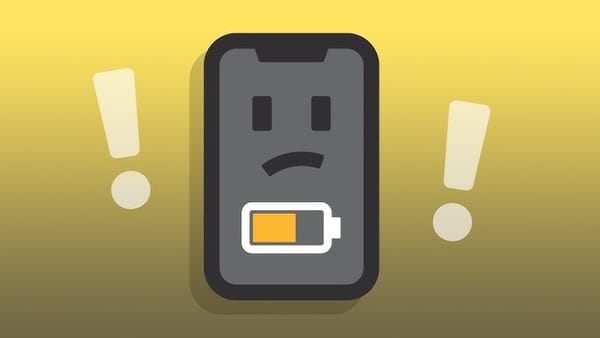iOS 26: Is Apple Quietly Sidelining the iPhone?
iOS 26 delivered minimal upgrades, hinting at a seismic shift: the iPhone's role in Apple's ecosystem is changing. Its diminishing annual value, alongside empowered iPads and Macs, suggests it's no longer the indispensable core.

iOS 26: Is Apple Quietly Sidelining the iPhone?
WWDC 2025 delivered iOS 26, and if you expected a groundbreaking leap for the iPhone, you weren’t paying attention.
While presented as a “reimagined” experience, the reality is a series of iterative tweaks and the predictable integration of AI.
The actual significance of iOS 26 isn’t in what it brings to the iPhone, but what it doesn’t, and what that implies for the iPhone’s diminishing centrality.
Here’s the breakdown of iOS 26:
A list of what’s new Apple’s official offerings for iOS 26. Once we’ve sifted through these updates, the underlying direction for the iPhone’s future becomes much clearer.
- “Liquid Glass” Interface: A visual refresh. App icons, widgets, and the Dock gain dynamic morphing. It’s eye candy, not fundamental utility. The OS looks more alive; its core function remains unchanged.
- Apple Intelligence Integration: On-device AI. Any app can use it for personalized quizzes, suggestions, and “privacy by default.” This is the expected incremental AI stuffing. Useful, but not a reason to buy a new device.
- Dynamic Lock & Home Screens: Time display adapts to wallpaper, 3D photo effects. Aesthetic enhancements. They add polish, not new workflows or critical features.
- Streamlined Camera & Photos: Less cluttered Camera app, tabs return to Photos, 3D lock screen effect now in library. Usability refinements. No major photographic innovations.
- Smarter Messages & Phone: Group chat backgrounds, polls, AI caller screening, Hold Assist, spam detection. Quality-of-life improvements. These are overdue features, not groundbreaking.
- Ubiquitous Live Translation: Real-time, on-device translation in Messages, FaceTime, Phone. This is a functional upgrade, but again, hardly a paradigm shift for the iPhone itself.
- New Games App: A dedicated hub for games, achievements, social features. Apple treating gaming “first-class” is good, but it’s a consolidation, not a new gaming platform unique to iPhone.
- Visual Intelligence: On-screen search and action. Identify objects, extract event details from screenshots. This is a genuinely useful AI feature, but it’s a system-level utility, not an iPhone-specific driver.
- Unified Consistency: Version numbers, consistent design across platforms. Apple finally delivering on cross-device cohesion. This benefits the ecosystem, not just the iPhone in isolation.
Notice the trend? Beyond some visual tweaks, overdue features, and the expected AI polish, there’s little here that qualifies as true innovation here.
Compare this to what I covered in Apple’s WWDC 2025: iPadOS 26 Just Made the iPad the MacBook’s Biggest Competitor or the upcoming Mac updates those platforms are seeing foundational shifts, the kind that genuinely redraw boundaries.
It’s not realistic to expect seismic change from every device every year, but the contrast is telling. It points to a deeper recalibration in Apple’s strategy, one that’s worth paying attention to as we move forward.
The iPhone: A Feature Cannibalization Target
The iPhone’s declining year-over-year appeal isn’t a bug; It’s a feature of Apple’s broader strategy.
Consider the iPad. As I outlined previously, the iPads, especially with its M-series chips, has effectively cannibalized a segment of the MacBook market.
It offers a compelling entry point into mobile compute that was once the sole domain of laptops. This trend extends to the iPhone.
Now, macOS Tahoe brings robust Continuity features, a native Phone app, and deep iPhone Mirroring.
Many “iPhone-only” experiences, or those requiring the iPhone as the primary hub, are now seamless on the Mac.
Widgets, real-time activities, and even direct phone calls are migrating away from the iPhone’s exclusive domain.
The original allure of the iPhone was its unrivaled mobility and self-contained utility. You needed your iPhone for everything. But as the iPad gains laptop-level capabilities and the Mac absorbs iPhone functionality, the iPhone’s unique selling proposition erodes.
Why upgrade annually when the new features are minimal, and many of the critical mobile use cases you relied on the iPhone for are now better, or equally well, handled by a more powerful iPad or a seamlessly integrated Mac?
The iPhone isn’t going away, and it won’t be replaced. But its role is shifting from the singular center of gravity to one node in an increasingly distributed and interconnected ecosystem.
Its yearly updates are becoming less about groundbreaking individual device features and more about minor polish or AI integration that serves the entire platform.
The iPhone is becoming just another screen, a portal to Apple’s intelligence and services, rather than the indispensable core.
For users, this means fewer compelling reasons to upgrade their phone, and more reasons to leverage the full suite of Apple devices for a truly integrated experience.
The strategic reality is simple: the iPhone, once the king, is now merely a powerful knight on Apple’s expanding chessboard.



